Converting Hardware to a SIRIS with the Datto Utilities SIRIS Imager
This article explains step by step how to convert a target machine to a SIRIS device with the SIRIS imager.
If you have not done so already, make sure that the target system meets the minimum system and compatibility requirements by following the preliminary steps in the Getting Started with the SIRIS Imager article.
Steps
The steps to convert a machine to a SIRIS device are as follows:
- Create a Datto Utilities USB stick
- Connect the hardware to your local network
- Boot your machine
- Connect to your machine via your local network
- Choose the SIRIS Imaged option
- Select an OS drive
- Choose your required RAID configuration
- Review and Confirm
- Complete the imaging process
- Register your new device
1. Create a Datto Utilities USB stick
If you don't already have a USB stick that has been imaged with the Datto Utilities, download the SIRIS Imaged Installer from downloads.datto.com and create a bootable Datto Utilities USB stick by following the steps in the Imaging a USB drive with Datto Utilities article, then proceed to step 2.
2. Connect the hardware to your local network
The Datto Imager uses DHCP to find and connect to your local network on bootup, so you'll need to have your new machine connected to your local network before you boot it up.
- Connect a single cable to the first order NIC on your new hardware, The connected NIC will be identified as (eth0)
- You should label this NIC as eth0 for easy identification.
You should only have one NIC from your new hardware connected to your network for the initial setup. The installer will display an error banner if more than one NIC connection is detected.
3. Boot your machine
Boot the hardware into the Datto Utilities environment from your USB stick by following the instructions in the Booting a Target Machine with Datto Utilities article.
4. Connect to your machine via your local network
The Datto Utility should find and connect to your network automatically. If it is unable to find and join the network, you'll be presented with a page to configure the network settings manually. You can also access this network settings page at any time by clicking the Configure Networking button in the top right corner of the main page. You won't see this networking page if the utility was able to connect automatically. 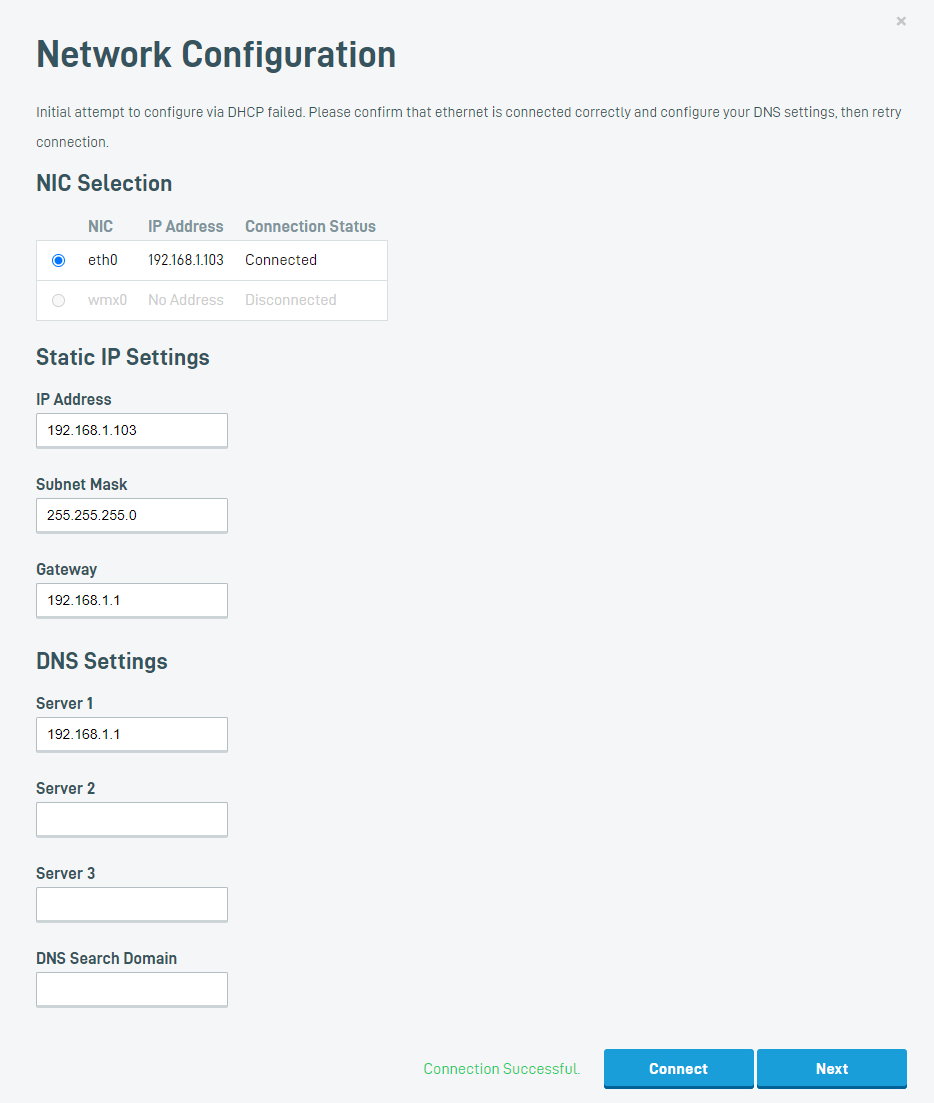
NOTE The NIC that the imager initially connects to on your new hardware will automatically be designated as eth0 on your new SIRIS device and must be 10GbE. Additional detected NICs will be designated in sequence as eth1, eth2 etc.
5. Start the SIRIS Imaged process
After booting into the Datto Utilities environment, you will see a menu similar to the example shown below:
From this point forward, you should manage the imaging process from a computer on the same network as the target hardware. Connect to the imaging session from another computer on your local network by using a web browser to navigate to the URL shown in the "This application can be accessed at..." field at the top left of the screen.
6. Select an OS Drive
Designate a drive to hold the Operating System (OS). The drive selected as the OS drive will not be used by the SIRIS for storage. For single drive devices, the imager will create a 40 GB partition for the OS drive.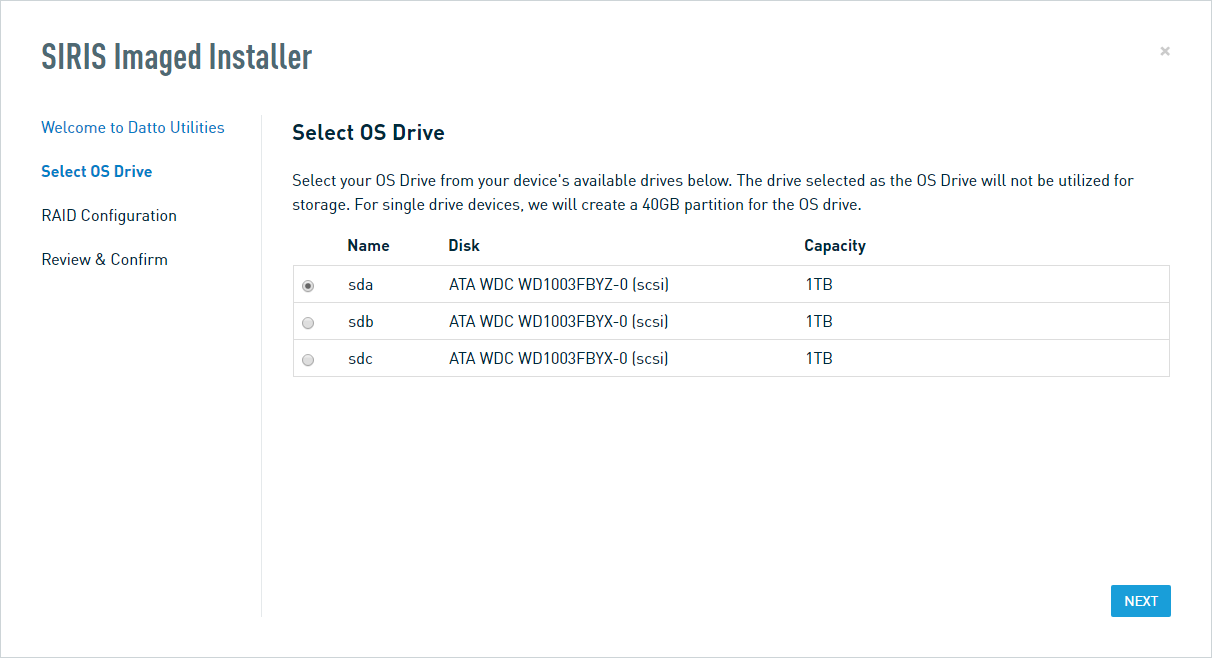
Select the drive to be used, and then click Next.
7. Choose your required RAID configuration
Select the RAID level for your target system. The imager will only allow you to select RAID levels optimized for the SIRIS experience. Click Next to continue.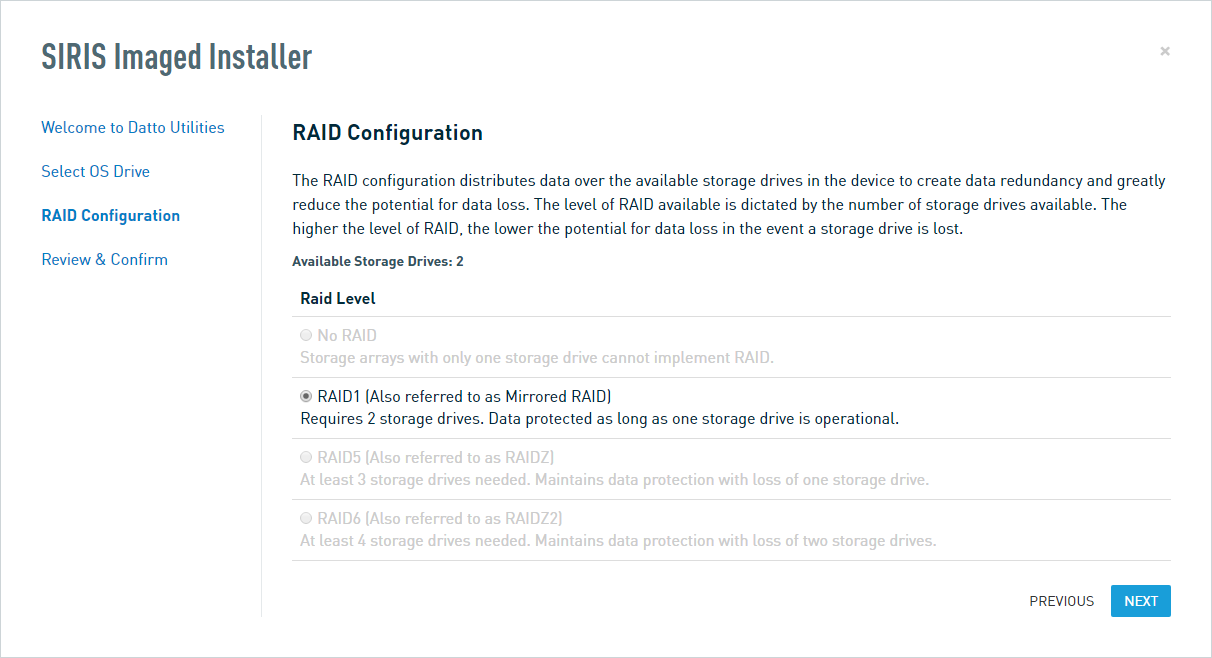
NOTE For more information about RAID technology, see this article (external link).
8. Review & Confirm
The imaging process will prompt you to review and confirm your configuration choices. If you need to make changes, you can click the title of any previously-completed section to go back.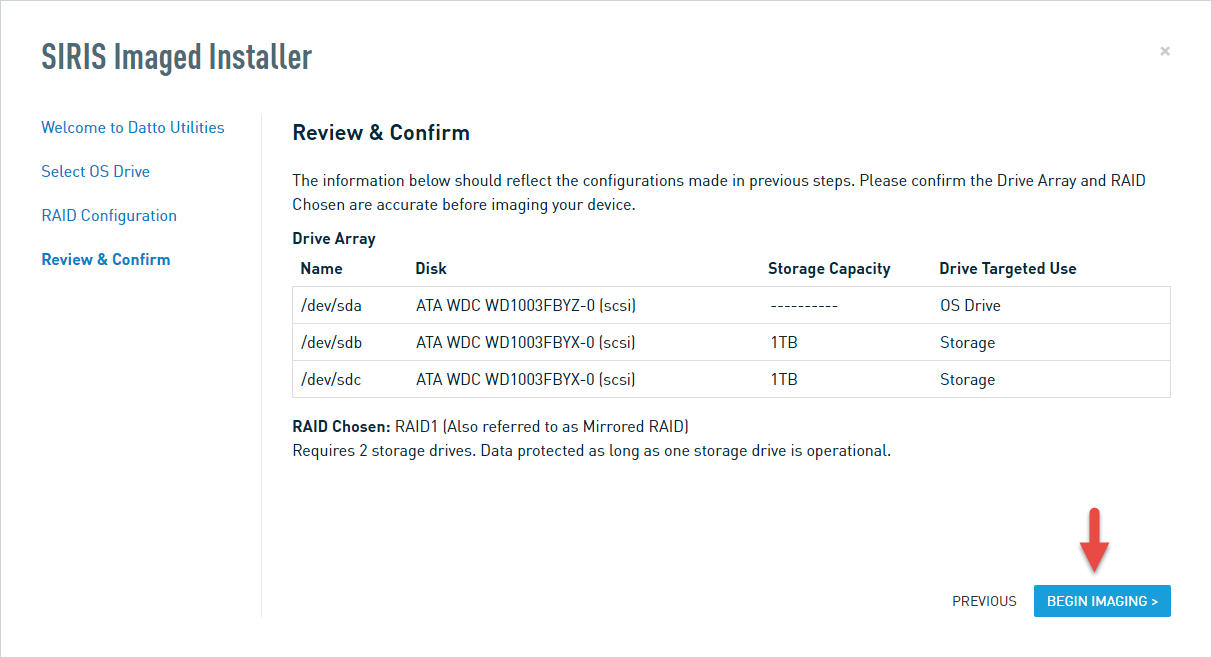
When you are ready to write the selected configuration to the target machine's disks, click Begin Imaging. You will see the prompt shown in Figure 5. Respond to the prompt with the required information, and then click Image My Device.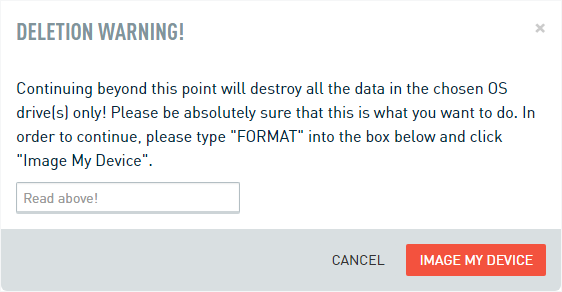
IMPORTANT Beginning the conversion process will delete all data on the target system. This step cannot be undone.
9. Complete the imaging process
The imaging process will begin. Depending on the size of the device, it may take some time to complete. Once all steps shown are marked as Complete, click Finish & Reboot. When prompted, remove the USB stick.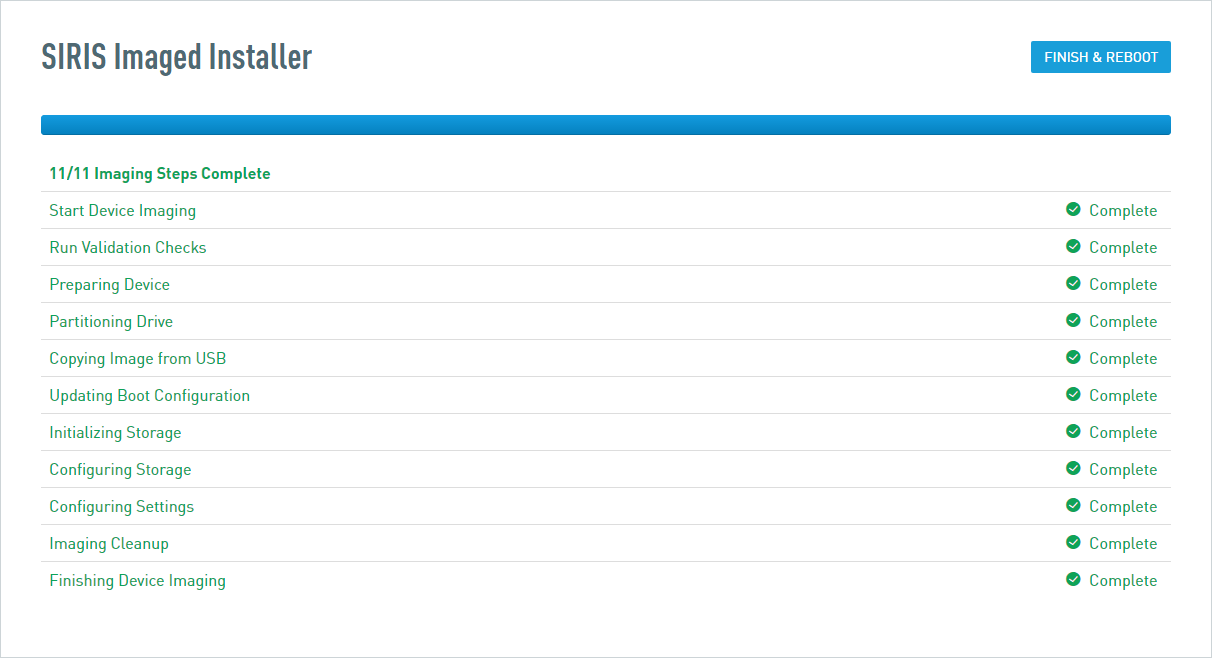
IMPORTANT If you need to start over with the imaging process, do not remove the USB drive. Instead, reboot with the drive still in place. Make sure that target hardware boots into the Datto Utilities environment. It is not possible to restart the imaging process once the target hardware boots into the Datto OS for the first time.
When the production machine reboots, you will see the information shown below on its local display.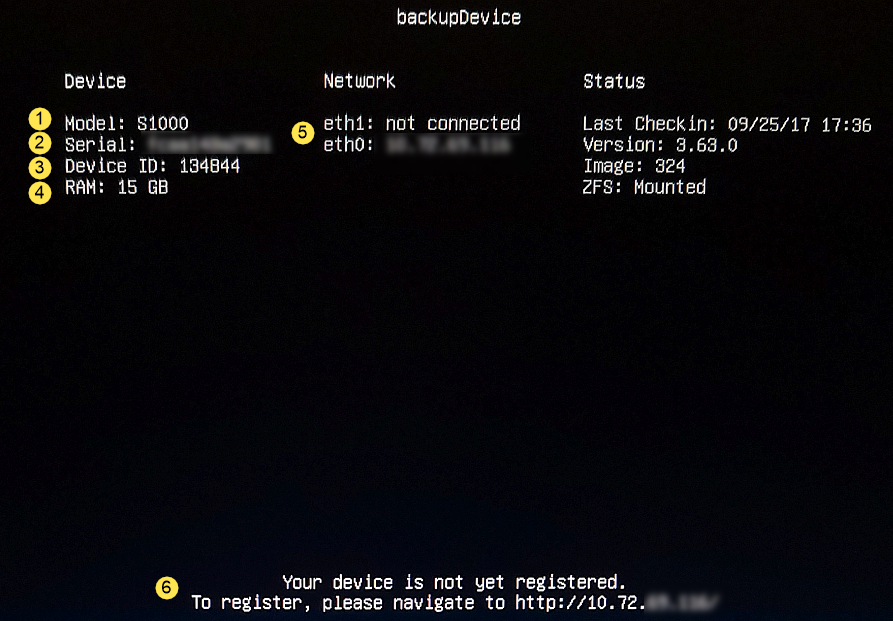
- Device Model: Shows the hardware model of the device. This will typically show a default value of Unknown until the imaging and registration process is complete.
- Serial: The device serial number of the converted machine. This is often the same value as the MAC address of eth0. If you received an error during install stating that your Mac address is already in use, contact Datto Technical Support for assistance.
- Device ID: This value is the internal number Datto uses to identify the converted device.
- RAM: Total amount of hardware RAM available to the device.
- Networking Status: Displays the connectivity status of the NICs on the device. At least one NIC must remain connected to the Internet and displaying an IP address for the conversion process to succeed.
- Registration Status: Displays the device registration status.
10. Register your new device
To finish the imaging process, you will need to register your converted device.
From a computer on the same network as your Datto device, navigate to the URL shown in the Registration Status field on your appliance. Alternatively, you can navigate to device.dattobackup.com, and click the entry for the device matching your converted device's serial number and IP address.
Once you have connected to the device, you will see the Device Registration screen shown below.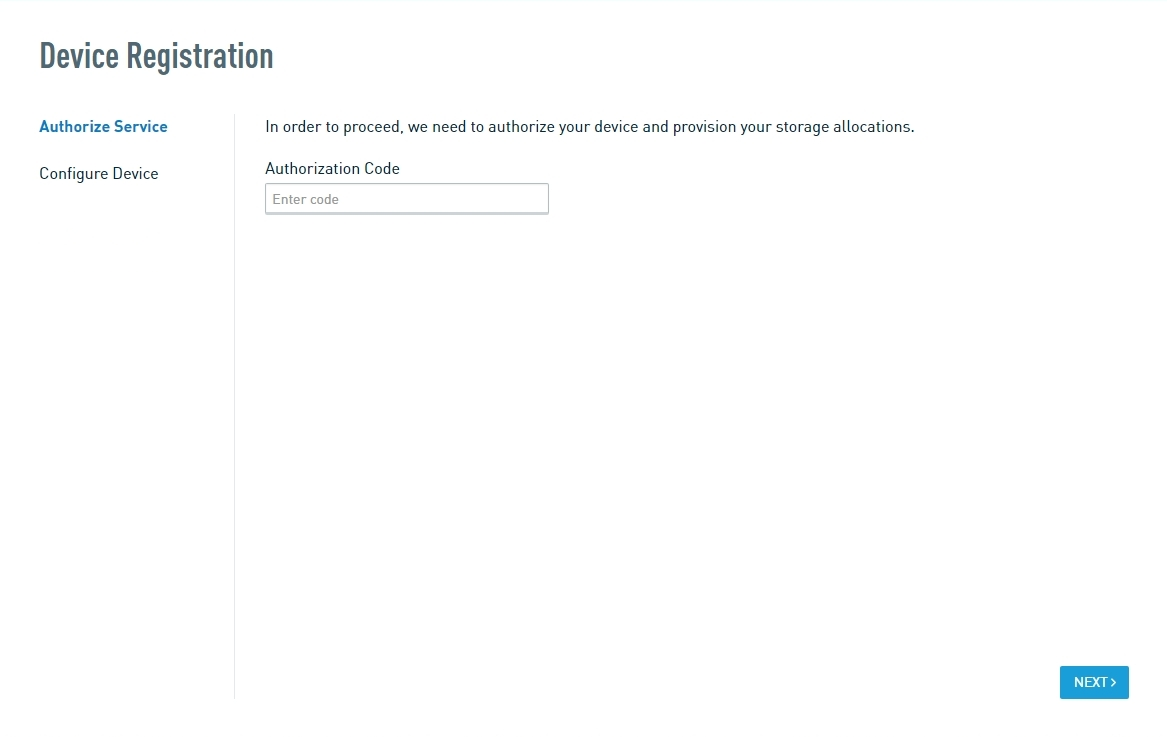
Enter the Authorization Code you received for your converted device (After you purchased SIRIS Imaged, you should have received an email with this information) then click Next.
The registration wizard will complete the imaging process by configuring the device model and tier of service purchased.
NOTE If you do not have an Authorization Code, contact your Datto Sales Executive or the Datto distributor that you purchased your SIRIS Imaged license from, for assistance.
Once the final conversion process completes, you will see the Configure Device page. Proceed to the Registering a Datto backup appliance article to continue.



